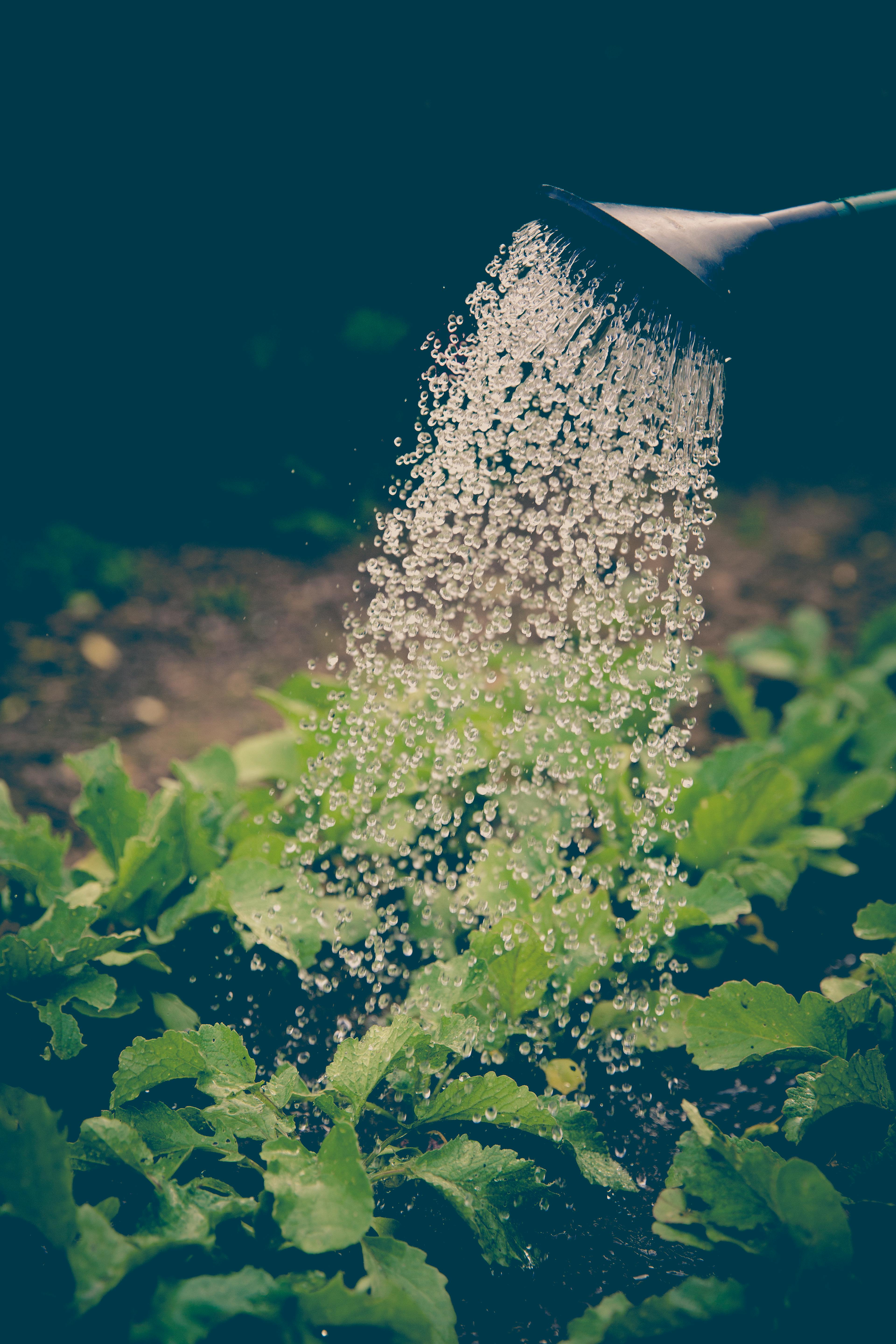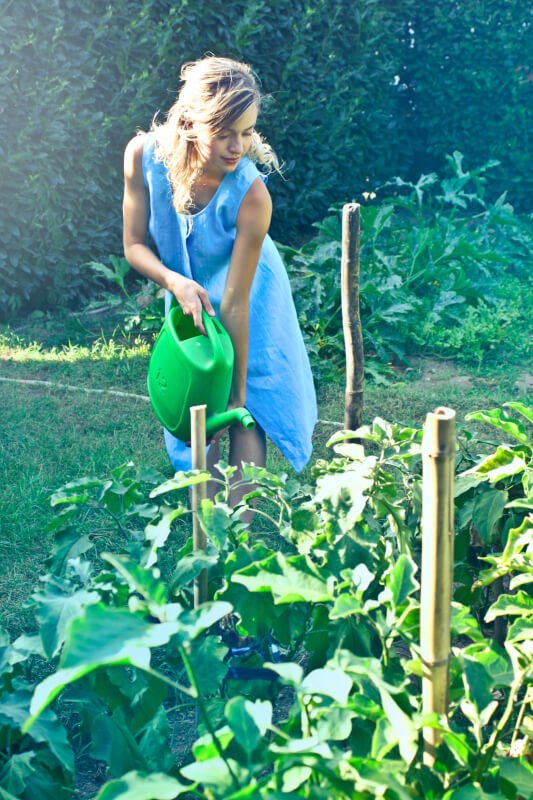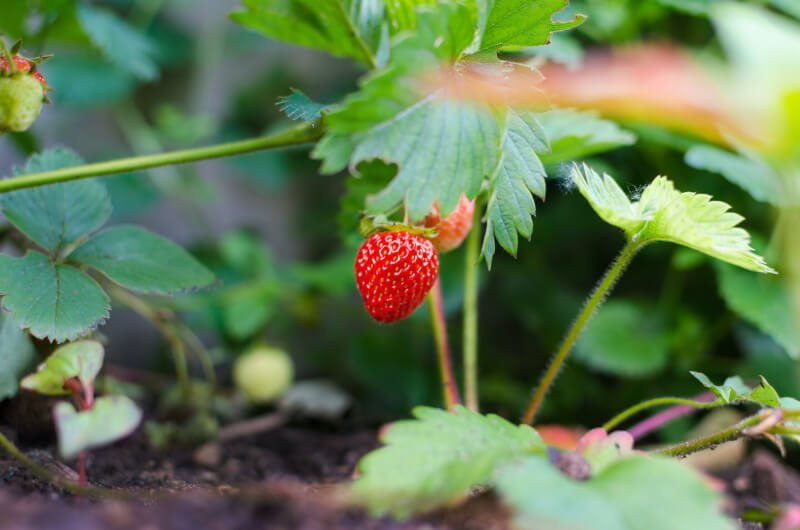Whether you have a green thumb or are just getting started with gardening, growing your own berries can be a rewarding and delicious endeavor. Not only do berries add a burst of flavor to your garden recipes, but they are also packed with essential nutrients and antioxidants. In this article, you’ll discover valuable tips and techniques on how to successfully grow an array of berries in your garden, allowing you to enjoy the fruits of your labor and create healthy recipes straight from your backyard. Get ready to embark on a berry-growing journey that will elevate your culinary adventures to new heights.
Choosing the Right Berry Varieties
Understanding Different Berry Types
When it comes to growing berries in your garden, it’s important to have a good understanding of the different types of berries available. There are several popular berry varieties, each with its own unique characteristics and flavor profiles. Some of the most common types of berries include strawberries, blueberries, raspberries, and blackberries. Each variety requires specific growing conditions and care, so it’s essential to research and choose the right berry types for your garden.
Considering Climate and Soil Conditions
Before selecting the berry varieties for your garden, you need to consider your local climate and soil conditions. Certain berries thrive in specific climates, so it’s crucial to choose varieties that are well-suited for your region. For example, strawberries prefer cooler temperatures, while blueberries thrive in acidic soil conditions. By understanding the climate and soil requirements of the berries you want to grow, you can ensure their successful growth and abundant harvest.
Researching Disease Resistance and Pest Tolerance
Another factor to consider when choosing berry varieties is their disease resistance and pest tolerance. Some berry plants are naturally more resistant to diseases and pests, making them easier to grow and maintain. By researching the disease resistance and pest tolerance of different varieties, you can select plants that will require less effort to keep healthy. This will save you time and effort in the long run and increase your chances of a successful berry harvest.
Preparing Your Garden for Berry Plants
Selecting an Ideal Location
Selecting the right location for your berry plants is crucial for their overall health and productivity. Most berry varieties require at least six hours of direct sunlight per day, so it’s important to choose a location in your garden that receives adequate sunlight. Additionally, consider factors such as soil drainage and proximity to other plants. Avoid planting your berry plants in low-lying areas that tend to collect water to prevent root rot. Ensure sufficient space between your berry plants and other plants to allow for proper airflow and reduce the risk of disease transmission.
Testing and Preparing the Soil
Proper soil preparation is essential for the successful growth of berry plants. Before planting, it’s recommended to test your soil’s pH level and nutrient content. Berries generally prefer slightly acidic soil conditions, so adjusting the pH may be necessary. Based on the soil test results, you can also determine if any amendments, such as compost or organic matter, are needed to improve the soil’s fertility. Adequate soil preparation ensures that your berry plants have the necessary nutrients to thrive and produce a bountiful harvest.
Creating Proper Drainage
Good drainage is crucial for the health of your berry plants, as excessive water can lead to root rot and other diseases. If your garden soil has poor drainage, consider implementing drainage systems such as raised beds or adding organic matter to improve the soil structure. You can also plant your berry plants on a slope to encourage water runoff and prevent waterlogging. Providing proper drainage will help ensure healthy root development and prevent water-related issues that could hinder the growth of your berry plants.
Planning for Adequate Sunlight
As mentioned earlier, most berry varieties require ample sunlight to thrive. When planning your garden layout, make sure your berry plants will receive at least six hours of direct sunlight each day. Avoid planting them in areas shaded by trees or other structures that may block the sunlight. Proper planning for adequate sunlight will promote vigorous growth, enhance fruit production, and increase the overall health of your berry plants.

Starting Berries from Seeds or Plants
Understanding Seed Germination
Starting berries from seeds can be a rewarding experience, but it requires patience and careful attention. Not all berry varieties can be grown from seeds, so it’s important to research which berries can be successfully started this way. Seed germination requires specific conditions, including moist soil, consistent temperature, and sufficient light. It’s recommended to start seeds indoors in seed trays and then transplant the seedlings once they have reached an appropriate size.
Choosing Healthy Berry Plants
If starting berries from seeds seems too daunting, you can also opt to purchase berry plants from nurseries or garden centers. When selecting plants, choose ones that are healthy and free from any signs of diseases or pests. Look for plants with vibrant leaves and strong stems, as these are indicators of their overall health. Avoid purchasing plants with wilted or yellowing leaves, as they may not be in the best condition to thrive in your garden.
Transplanting Seedlings to Garden Beds
Whether you started berries from seeds or purchased young plants, the next step is transplanting them into your garden beds. Before transplanting, make sure the soil in your garden beds is well-prepared and adequately drained. Dig a hole in the soil that is large enough to accommodate the plant’s root ball. Gently remove the plant from its container, being careful not to damage the delicate roots. Place the plant in the hole, ensuring that the top of the root ball is level with the soil surface. Fill the hole with soil, firming it gently around the plant, and water thoroughly. Transplanting seedlings to garden beds should be done when the plants are not actively growing to minimize transplant shock.
Providing Proper Care and Maintenance
Watering and Irrigation Techniques
Proper watering is essential for the health and productivity of your berry plants. Most berries require consistent moisture, but they are also susceptible to fungal diseases if their foliage stays wet for too long. It’s important to find the right balance. Water your berry plants deeply and thoroughly, ensuring that the soil is evenly moist. Avoid overwatering, as it can lead to root rot and other water-related issues. Consider using soaker hoses or drip irrigation systems to provide a slow, steady water supply directly to the plant roots, minimizing water waste and reducing the risk of foliar diseases.
Mulching for Weed Control and Moisture Retention
Mulching around your berry plants is a great way to control weeds and retain moisture in the soil. Weeds compete with your berry plants for nutrients and water, so it’s important to keep them at bay. Apply a layer of organic mulch, such as straw, wood chips, or compost, around the base of your berry plants. Mulch also helps regulate soil temperature, suppresses weed growth, and retains moisture, reducing the frequency of watering needed. Be sure to leave a small space around the stems of the plants to prevent excessive moisture buildup, which can lead to disease.
Pruning to Promote Growth and Fruit Production
Pruning is an essential task in maintaining healthy and productive berry plants. Regular pruning helps remove dead or diseased branches, improves airflow, and stimulates new growth. Different berry varieties require specific pruning techniques, so it’s important to research and understand the pruning requirements of each type of berry you are growing. Generally, pruning should be done during the dormant season to minimize stress on the plant. Remove any dead or damaged branches, as well as any shoots growing in the wrong direction. Pruning also helps control the size and shape of your berry plants, making them more manageable and easier to harvest.
Monitoring and Managing Common Pests and Diseases
Berries can sometimes fall prey to pests and diseases, which can damage the plants and reduce fruit production. It’s essential to regularly monitor your berry plants for any signs of pest infestations or diseases. Common pests that target berries include aphids, spider mites, and fruit flies. Diseases such as powdery mildew and gray mold can also affect your plants. If you notice any signs of pests or diseases, take appropriate measures to manage and control them. This may include using organic insecticides or fungicides, practicing cultural controls, or introducing beneficial insects to your garden.

Harvesting and Storing Fresh Berries
Recognizing Fruits Ready for Harvest
One of the joys of growing your own berries is being able to enjoy the delicious fruits at their peak ripeness. Each berry variety has its own indicators of when it’s ready to be harvested. Generally, ripe berries will have a vibrant color, firm texture, and a sweet aroma. Be sure to consult specific guidelines for each berry type you are growing to ensure you harvest them at their optimal stage.
Picking Techniques to Avoid Damage
To avoid damaging your precious berry plants, it’s important to use the proper picking techniques. When harvesting berries, gently grasp the fruit between your thumb and forefinger and carefully twist or gently pull it from the plant. Avoid tugging or forcefully pulling on the berries, as it can cause damage to the plant or result in the fruit being squished. Handle the berries with care to ensure their quality and prevent bruising.
Storing Berries for Extended Shelf Life
While freshly picked berries are incredibly delicious, you may find yourself with a surplus that you’d like to store for later use. To extend the shelf life of your berries, it’s important to handle and store them properly. First, remove any overripe or damaged berries to prevent them from spoiling the rest. Then, gently wash the berries and allow them to dry completely before storage. Store your berries in airtight containers or plastic bags in the refrigerator to maintain freshness. Berries can also be frozen for long-term storage. Simply spread them out on a baking sheet and freeze them individually before transferring them to airtight containers or freezer bags.
Utilizing Berries in Healthy Recipes
Exploring Culinary Possibilities
Berries are incredibly versatile and can be used in a wide range of culinary creations. From sweet desserts to savory dishes, berries can add a burst of flavor and vibrant color to your recipes. Experiment with different cooking techniques and flavor combinations to unlock the full potential of your homegrown berries. Try incorporating them into pies, tarts, salads, sauces, and even savory dishes like salads or grilled meats. The possibilities are endless, so let your creativity flourish in the kitchen.
Creating Nutritious Berry Smoothies
Berries are packed with essential nutrients and antioxidants, making them a perfect ingredient for healthy smoothies. Blend a handful of your favorite berries with yogurt, milk or plant-based milk, and a sweetener of your choice for a refreshing and nutrient-packed smoothie. You can also add other fruits, greens, or protein powders to customize your smoothie according to your taste and nutritional needs. Enjoy a delicious and nutritious berry smoothie as a quick breakfast or energizing snack.
Making Delicious Berry Jams and Preserves
Preserving the flavor of your homegrown berries is a great way to enjoy them all year round. Making homemade berry jams, jellies, and preserves allows you to savor the taste of summer even during the colder months. Experiment with different berry combinations and flavor profiles to create unique and delicious spreads. Store them in sterilized jars and enjoy them on toast, in pastries, or as a topping for yogurt and ice cream.
Incorporating Berries into Salads and Desserts
Berries can bring a burst of freshness and sweetness to both salads and desserts. Add a handful of berries to your favorite green salad for a pop of color and flavor. They pair well with leafy greens, cheese, nuts, and vinaigrette dressings. For desserts, berries can take center stage in pies, cobblers, parfaits, and fruit salads. They can also be used as a garnish or sauce for cakes, puddings, and ice creams. Get creative in the kitchen and discover new and delicious ways to incorporate berries into your favorite dishes.

Promoting Pollination for Better Yield
Understanding the Importance of Pollination
Pollination plays a critical role in the fruiting process of berries. Many berries require cross-pollination to produce fruit, which involves the transfer of pollen from the male parts to the female parts of the flower. Pollination is essential for the development of healthy and abundant fruits. Without proper pollination, your berry plants may produce fewer fruits or may not fruit at all. Understanding the importance of pollination and taking steps to promote it can significantly improve the yield of your berry plants.
Attracting Bees and Other Pollinators
To attract bees and other pollinators to your garden, you can create a pollinator-friendly environment. Provide a variety of flowering plants that bloom at different times throughout the growing season to attract a diverse range of pollinators. Native plants and wildflowers are particularly attractive to bees. Avoid using pesticides and insecticides that can harm or deter pollinators. By creating a welcoming habitat for bees and other pollinators, you are increasing the chances of successful pollination and higher berry yields.
Using Hand Pollination Techniques
In some cases, you may need to resort to hand pollination techniques to ensure proper pollination of your berry plants. Hand pollination involves manually transferring pollen from the male flowers to the female flowers. You can use a small brush or even your fingers to gently transfer the pollen. This technique is particularly useful for berries that have partial or weak self-fertility. By taking the time to hand pollinate, you can increase the chances of fruit set and improve the overall yield of your berry plants.
Dealing with Common Berry Plant Problems
Identifying Nutrient Deficiencies
Nutrient deficiencies can manifest as various symptoms in your berry plants. Common signs of nutrient deficiencies include yellowing or discoloration of leaves, stunted growth, and poor fruit development. To identify nutrient deficiencies, it’s important to observe the overall appearance of your plants and any specific signs of discoloration or abnormalities. Soil testing can also help determine nutrient deficiencies and guide you in providing the necessary amendments or fertilizers to correct the issue. Proper nutrient management is crucial for maintaining the health and productivity of your berry plants.
Managing Overcrowding and Spreading
Overcrowding and spreading are common issues when growing berry plants. If your berry plants are too densely planted, they may compete for resources, leading to stunted growth and reduced fruit production. It’s important to provide adequate spacing between plants to ensure proper airflow and prevent the spread of diseases. If your berry plants are spreading excessively, it’s advisable to use trellises or supports to keep them contained and make harvesting easier. Regular pruning and thinning out of excess growth can also help manage overcrowding and promote healthier plants.
Addressing Diseases and Fungal Infections
Berries can be susceptible to various diseases and fungal infections, such as powdery mildew, gray mold, and root rot. To address these issues, it’s important to practice good sanitation and cultural controls. Remove any infected or diseased plant parts promptly to prevent the spread of diseases. Ensure proper airflow around your berry plants by providing sufficient spacing and pruning as needed. Avoid overhead watering, as wet foliage can promote fungal growth. Consider using organic fungicides or seeking professional advice if the problem persists. By addressing diseases and fungal infections promptly, you can protect the health of your berry plants and ensure a successful harvest.

Extending the Berry Growing Season
Growing Berries in Containers or Hanging Baskets
One way to extend the berry growing season is by growing them in containers or hanging baskets. This allows you to move the plants to different locations to optimize sunlight and temperature conditions. Containers and hanging baskets can also be brought indoors during colder months, providing a controlled environment for continued berry production. Select compact or dwarf varieties that are well-suited for container gardening and ensure proper drainage and regular watering to keep the plants healthy.
Utilizing Greenhouses or Hoop Houses
Greenhouses and hoop houses are excellent options for extending the berry growing season, particularly in cooler climates. These structures provide a controlled environment where you can regulate temperature and protect your berry plants from adverse weather conditions. The increased warmth and protection from frost allow for earlier planting and an extended growing season. Proper ventilation and monitoring of humidity levels are important to prevent the development of diseases in these enclosed spaces.
Implementing Season Extension Techniques
There are several season extension techniques that can be employed to prolong the berry growing season. Utilizing row covers or frost blankets can protect your plants from early or late-season frosts, allowing for an extended growing period. Mulching can provide insulation and regulate soil temperature, enabling the plants to tolerate cooler temperatures for a longer time. Additionally, using cold frames or tunnels can create a microclimate that extends the growing season by providing extra warmth and protection. By implementing these techniques, you can enjoy an extended harvest of fresh, homegrown berries.
Exploring Different Berry Species
Growing Succulent Strawberries
Strawberries are a popular choice for many gardeners due to their sweet taste and versatility in culinary applications. They come in various sizes and cultivars, including June-bearing, everbearing, and day-neutral types. June-bearing strawberries produce a large harvest over a short period, while everbearing and day-neutral strawberries offer a continuous harvest throughout the growing season. Strawberries thrive in well-drained soil and require regular watering and mulching. Incorporating strawberry plants into your garden will provide you with a delightful and rewarding berry-growing experience.
Cultivating Flavorful Blueberries
Blueberries are known for their rich flavor and nutritional value. They are a great choice for home gardeners, as they are relatively low maintenance and can adapt to a range of soil conditions. Blueberries require acidic soil with a pH between 4.0 and 5.5. If your soil is not naturally acidic, you can amend it with additives such as sulfur or peat moss to create the ideal growing conditions. With proper care and maintenance, you can enjoy bountiful harvests of delicious and nutritious blueberries.
Harvesting Juicy Raspberries and Blackberries
Raspberries and blackberries are beloved for their juicy texture and distinct flavors. They are typically grown on long canes that require support, such as trellises or fences. Raspberries come in two types: summer-bearing, which produce one large harvest in the summer, and everbearing, which offer two smaller harvests, one in the summer and one in the fall. Blackberries, on the other hand, are either erect or trailing varieties. Both raspberries and blackberries require regular pruning and benefit from mulching to retain moisture and control weeds. Add these bramble fruits to your garden for an abundance of delectable berries.
Planting Unique Berry Varieties
Aside from the more common berry varieties, there are several unique and lesser-known berry species that you can explore in your garden. These include currants, elderberries, gooseberries, and lingonberries, among others. Each of these berries has its own distinctive flavor, and they can be used in a wide range of culinary creations. Research the specific growing requirements of these unique berries to ensure their successful cultivation. By planting unique berry varieties, you can expand your palate and enjoy a diverse selection of homegrown berries.
In conclusion, growing your own berries can be a rewarding and fulfilling experience. By understanding the different berry types, preparing your garden properly, starting your plants from seeds or young plants, providing proper care and maintenance, and implementing techniques to extend the growing season, you can enjoy a bountiful harvest of fresh, delicious berries. From incorporating berries into healthy recipes to promoting pollination and managing common problems, this comprehensive guide will help you successfully grow and enjoy your own homegrown berries. Happy berry gardening!



